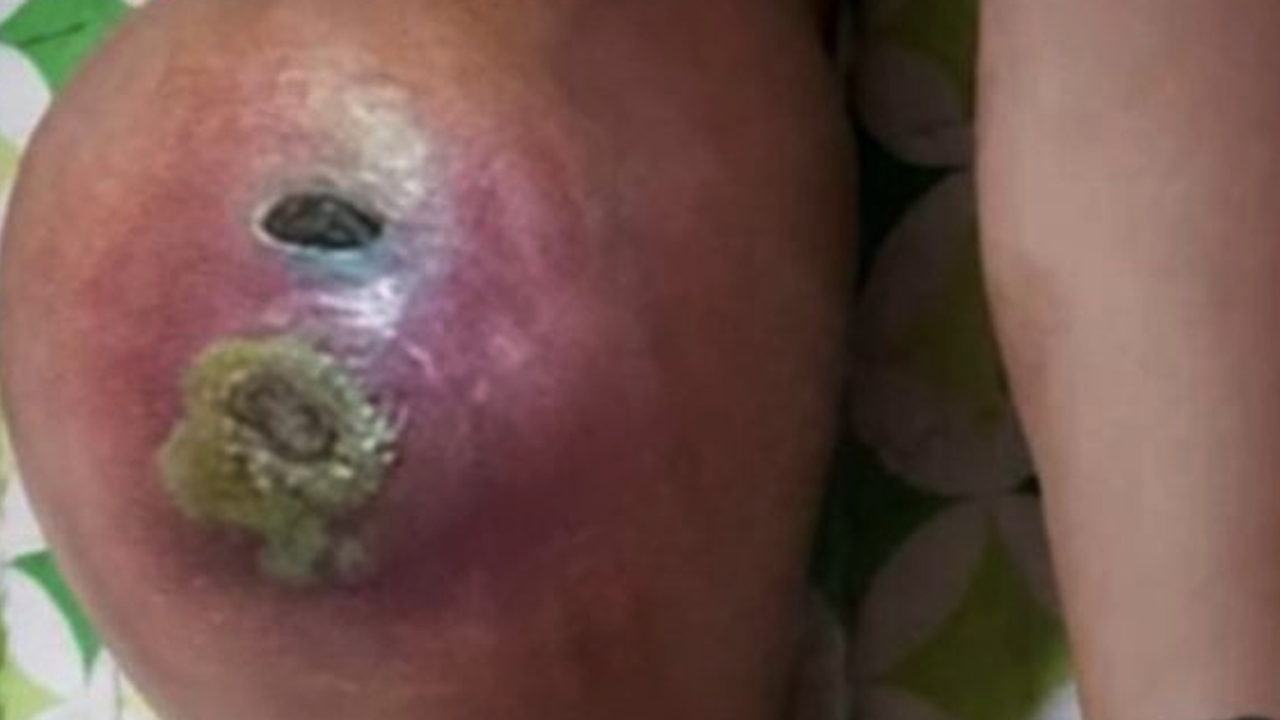Scroll Down to watch👇👇
Pimple Blackheads: Unmasking the Culprits of Skin Woes
Introduction

Pimple blackheads—those tiny, stubborn dots that seem to defy all skincare efforts—are a common annoyance for many. Whether they camp out on our noses, chins, or backs, blackheads can be perplexing. Let’s delve into their origins, appearance, and strategies for dealing with these pesky skin intruders.
What Are Blackheads?
Blackheads are a type of acne (acne vulgaris). Unlike their fiery cousins—the inflamed red pimples—blackheads appear as open bumps on the skin. Picture tiny dark specks dotting your T-zone or scattered across your back. But what causes them?
The Culprit: Clogged Pores
Blackheads emerge when hair follicles become clogged with excess oil (sebum) and dead skin cells. These clogs create a cozy environment for bacteria, leading to the formation of—you guessed it—blackheads. But why do they look black?
The Oxidation Effect
Contrary to popular belief, blackheads aren’t filled with dirt. Instead, an irregular reflection of light off the clogged follicle gives them their dark hue. When the material inside the pore is exposed to air, it oxidizes, turning the blackhead black. So, it’s not dirt—it’s science!
Treatment Strategies
Gentle Cleansing: Regularly cleanse your skin with a mild, non-comedogenic cleanser. This helps remove excess oil and dead skin cells, preventing blackheads from settling in.
Exfoliation: Exfoliating 2-3 times a week with products containing salicylic acid or alpha hydroxy acids (AHAs) helps keep pores clear and reduces blackhead formation.
Topical Treatments: Look for products with ingredients like benzoyl peroxide or retinoids. These help unclog pores and regulate oil production.
Professional Extraction: For stubborn blackheads, consider professional extraction by a dermatologist. They’ll ensure complete removal without damaging your skin.
Conclusion
While blackheads may seem like unwelcome guests, understanding their origins empowers us to tackle them effectively. So, next time you spot those little dark dots, remember: it’s not dirt—it’s just science playing tricks on your skin!
Removing a fairly large epidermal cyst on the elbow—or anywhere on the body—is best handled by a medical professional, especially to prevent complications like infection, recurrence, or scarring. Here’s a detailed guide on the diagnosis, treatment, and removal process, including what to expect before, during, and after the procedure.
🧠 What is an Epidermal Cyst?
An epidermal cyst is a benign, slow-growing bump under the skin filled with keratin (a soft, cheese-like protein). It often appears on areas like the face, neck, back, or elbows.
| Key Features | Description |
|---|---|
| Appearance | Round, firm lump under the skin, may have a central black dot (pore) |
| Size | Can range from a few mm to several cm |
| Cause | Blocked hair follicle or trauma |
| Risk of Infection | Can become red, swollen, or drain pus |
⚠️ When to Remove It
You should see a healthcare provider for removal if:
-
It’s painful, infected, or draining fluid
-
It’s growing rapidly
-
It’s bothering you cosmetically
-
You suspect it’s something more serious (rare)
🏥 Professional Removal: Step-by-Step Procedure
✅ Done in a Medical Setting (Usually a Dermatologist or Minor Surgery Clinic)
1. Examination & Diagnosis
-
Visual inspection and palpation.
-
Sometimes ultrasound if it’s deep or unclear.
2. Preparation
-
Local anesthesia (lidocaine) is injected to numb the area.
-
Skin is cleaned with antiseptic.
3. Surgical Removal
There are two main approaches:
A. Complete Excision (Best for Large or Non-inflamed Cysts)
-
A small incision is made over the cyst.
-
The entire cyst sac (capsule) is carefully removed.
-
If the sac is not fully removed, the cyst may recur.
B. Incision & Drainage (If Infected)
-
If the cyst is inflamed or infected, only pus and keratin debris are drained.
-
The wall is often not removed at this stage because inflammation makes full excision difficult.
-
May be followed by antibiotics.
✅ Final removal is done after infection clears to prevent recurrence.
4. Closure
-
The wound may be closed with stitches or left open (depending on size and infection status).
-
A small dressing is applied.
🧴 Aftercare & Recovery
| Step | What to Do |
|---|---|
| Keep it clean | Wash daily with mild soap and water |
| Bandage | Change dressing as instructed |
| Avoid strain | Don’t stretch the elbow area too much during healing |
| Stitches | Usually removed in 7–14 days if used |
| Watch for infection | Redness, heat, pus, fever—report to doctor |
💊 Medications That May Be Prescribed
-
Topical antibiotics (e.g., mupirocin)
-
Oral antibiotics (e.g., cephalexin or doxycycline) if infected
-
Pain relief (acetaminophen or ibuprofen)
🧬 Can You Remove It Yourself?
🚫 Strongly discouraged. Large cysts, especially on joints like the elbow, involve deeper tissue and pose risks:
-
Incomplete removal → recurrence
-
Infection → cellulitis or abscess
-
Damage to nearby structures (nerves, tendons)
📚 References
-
American Academy of Dermatology – Epidermoid cysts overview
-
Mayo Clinic –
-
DermNet NZ – Epidermal cyst surgical treatment
